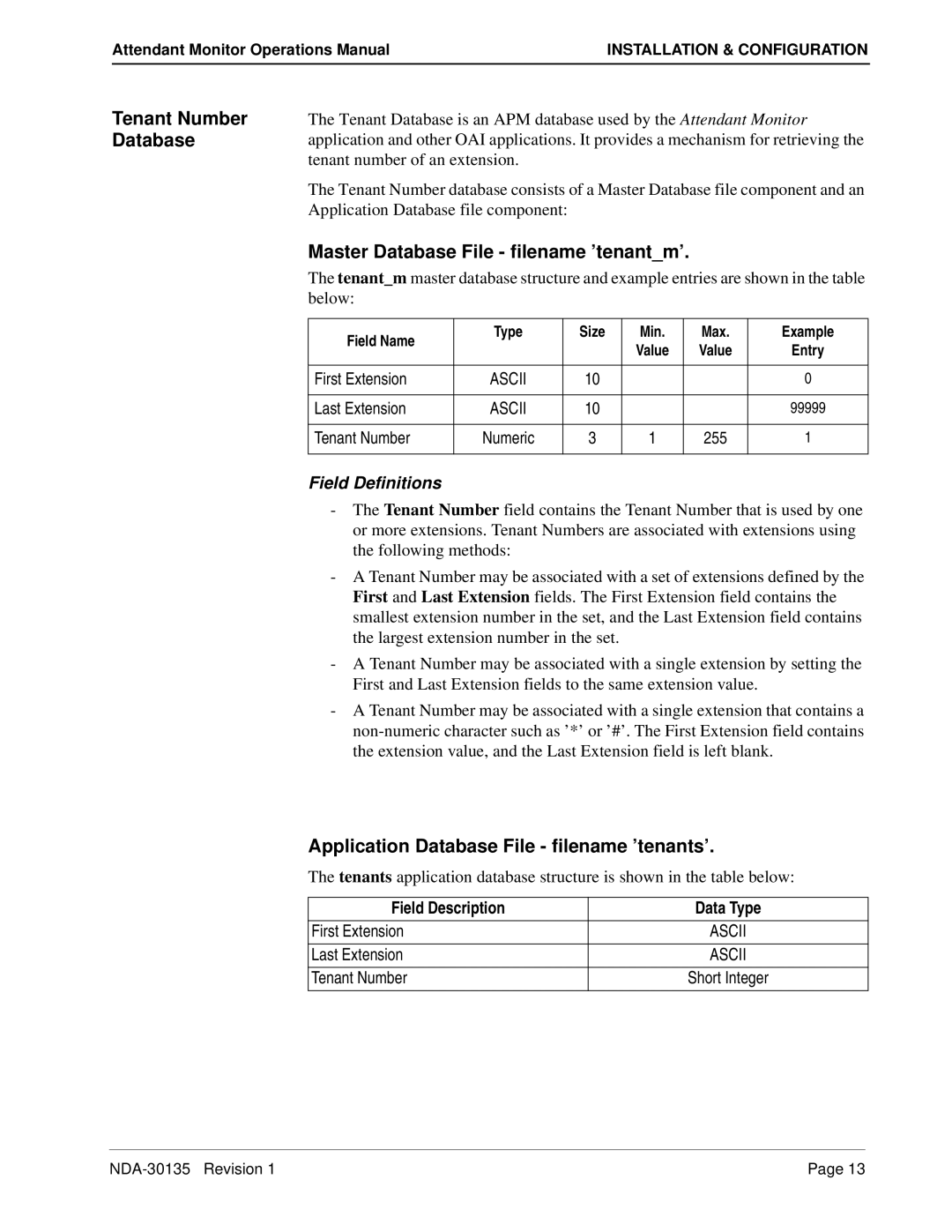Attendant Monitor Operations Manual | INSTALLATION & CONFIGURATION |
Tenant Number Database
The Tenant Database is an APM database used by the Attendant Monitor application and other OAI applications. It provides a mechanism for retrieving the tenant number of an extension.
The Tenant Number database consists of a Master Database file component and an Application Database file component:
Master Database File - filename ’tenant_m’.
The tenant_m master database structure and example entries are shown in the table below:
Field Name | Type | Size | Min. | Max. | Example |
|
| Value | Value | Entry | |
|
|
| |||
|
|
|
|
|
|
First Extension | ASCII | 10 |
|
| 0 |
|
|
|
|
|
|
Last Extension | ASCII | 10 |
|
| 99999 |
|
|
|
|
|
|
Tenant Number | Numeric | 3 | 1 | 255 | 1 |
|
|
|
|
|
|
Field Definitions
-The Tenant Number field contains the Tenant Number that is used by one or more extensions. Tenant Numbers are associated with extensions using the following methods:
-A Tenant Number may be associated with a set of extensions defined by the First and Last Extension fields. The First Extension field contains the smallest extension number in the set, and the Last Extension field contains the largest extension number in the set.
-A Tenant Number may be associated with a single extension by setting the First and Last Extension fields to the same extension value.
-A Tenant Number may be associated with a single extension that contains a
Application Database File - filename ’tenants’.
The tenants application database structure is shown in the table below:
Field Description | Data Type |
|
|
First Extension | ASCII |
|
|
Last Extension | ASCII |
|
|
Tenant Number | Short Integer |
|
|
Page 13 |
